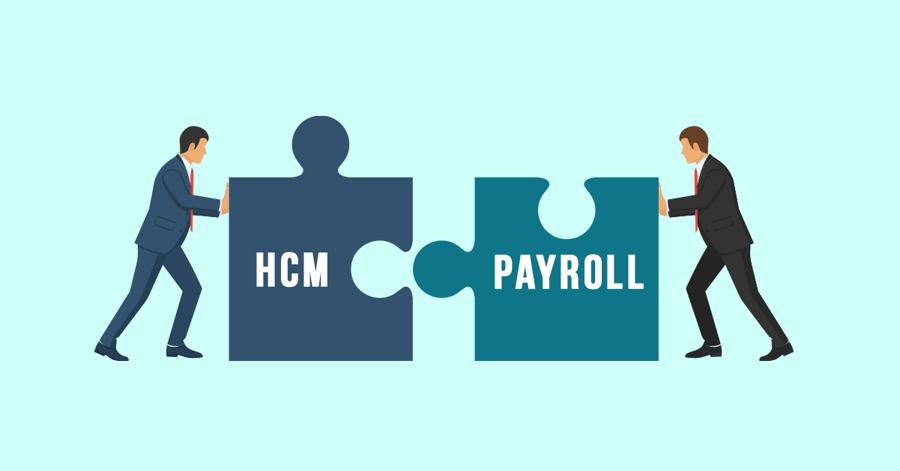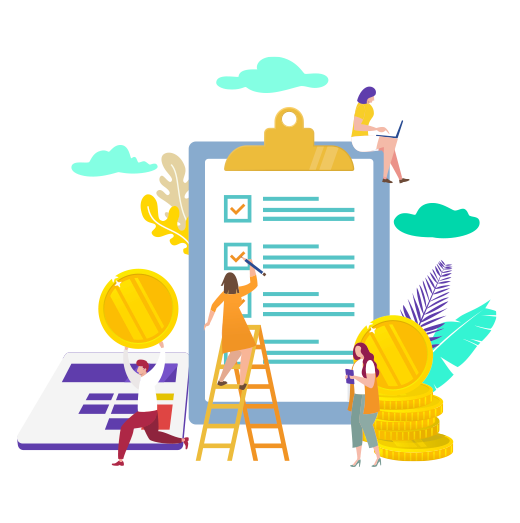
- Home
- Global Payroll
- The Process and the Benefits of integrating Payroll
The Process and the Benefits of integrating Payroll
Published :

Adopting better-integrated technologies, and systems have become essential for organizations to thrive in the ever-changing business environment. Additionally, understanding the need to simplify Human Resource (HR) processes with better technology and payroll solutions can help make the processes more efficient.
Though there is an option to manually manage all the HR activities, using a payroll software with HCM integrations can help immensely. This makes it essential to understand the process and the benefits of the payroll integrations with HCM for an organization. But before that, let us have a quick look at what HCM involves.
Human Capital Management entails multiple processes and tasks, starting with talent acquisition, employee remuneration, employee engagement etc. and ending with employee separation. Involving standardized reporting and scheduling with the payroll software helps the HR department better manage the employees and their expectations. In other words, your organization can gain multiple benefits using the HCM integrations with payroll.
The HCM market is expected to reach $37.8 billion by 2025 at a compound annual growth rate of 2.4%, as per Apps Run the World, 2021. Promising organizations continued growth with a better flow of data, the benefits offered by payroll solutions and HCM integrations are highly prominent. So, let us explore them here.
Managing a business or an organization involves multiple activities to be performed in a synchronized manner. One such critical segment to manage is human capital management. While HR payroll management is one of the primary responsibilities in HCM, other operations also must be performed regularly.
This is where the process of integrating the payroll software with HCM plays a crucial role. Allowing the seamless flow of information, HCM integrations like the one offered by the Ramco Multicounty Payroll solution with Workday and Oracle ensure smooth operations and better profitability.
The process of payroll integration with the HCM involves the following steps:
Create a framework that defines all HCM issues and payroll solutions to be implemented.
Build a plan to address individual HCM requirements separately in link to the payroll.
Define all the inputs to be passed to the payroll solution from the HCM integrations.
End with the implementation and check the performance at regular intervals.
Although knowing the basic steps of integration is essential, it is equally important to understand its benefits. Unifying the HCM integrations with the payroll software on a single platform can offer the business multiple strategic and cost-linked benefits. Such as,
HR and payroll involve various repetitive tasks. You would be required to maintain attendance, performance, reporting, and other similar worksheets for the appraisal process. Using the payroll solution with HCM can eliminate the need for paperwork and reduce the burden of manual tasks.
Managing HR payroll is not an easy job. An error in the data can create dissatisfaction among the employees. But using a single payroll and HR data management system can offer better insights and information to improve the decision-making process. Additionally, it enables human resources to concentrate on leading the teams and carrying out improved performance evaluations.
Employee satisfaction is one of the critical factors to business growth and sustainability. The HCM integrations with payroll will ensure an easy process right from employee onboarding. Without adding to the HR team's workload, a simple onboarding process can aid the organization's growth. These solutions increase employee engagement in business processes by giving them on-demand access to all the required information.
Payroll softwares integrated with HCM negates the need for a personal assistant or HR professional to manually provide the employees with the required information. This on-demand access of information in real-time increases the productivity of the employees as well as your chance to deploy the human resource to impactful areas of the business.
Data security and compliance are essential when dealing with sensitive employee data. Companies can have a consolidated, secure database to store and manage employee data by integrating payroll software with HCM. Reducing the chances of a data breach, redundancy, or even tampering, such an HCM integration can help the HR department to perform safely and efficiently.
The HR department is interlinked with every employee of an organization. Any changes in the policies or procedures by the top management need to be informed to everyone promptly. Using the HCM integration, HR can reduce the workload by shifting labor-intensive tasks to automation and focusing on more crucial tasks like training and development.
To create an ecosystem of satisfied employees, it is essential to ensure transparency in all the processes. Using the HCM integrations with the payroll software will improve the data enabling better reporting. Offering systematic data visibility will help address issues quickly with better solutions.
HCM integrations with payroll software are a central point for all data access needs. From an employee's first day on the job to their promotions, you can access everything with just a click using the HCM integrations. It centralizes the data, gives secure access, and relieves the HR manager's workload.
Integrating the Ramco Multi-Country Payroll Solution can offer seamless data flow with a frictionless employee experience. To get more information about our payroll solution, connect today.
Enterprise asset management (EAM) involves the management of mission critical assets of an organization throughout each asset's lifecycle. EAM is used to plan, optimize, execute, and track the needed maintenance activities with the associated priorities, skills, materials, tools, and information. The aim is to optimize the quality and utilization of assets throughout their lifecycle, increase productive uptime and reduce operational costs.
Enterprise asset management (EAM) involves the management of the maintenance of physical assets of an organization throughout each asset's lifecycle. EAM is used to plan, optimize, execute, and track the needed maintenance activities with the associated priorities, skills, materials, tools, and information.
The software helps in effective maintenance of assets through preventive, predictive, shutdown and breakdown maintenance strategies. The system also helps enterprises mitigate equipment risks by enhanced safety standards. The streamlined operations and improved asset performance helps organizations increase their investment effectiveness.
EAM is important because it helps organizations track, assess, manage and optimize asset quality and reliability. Asset intensive Organizations have hundreds, thousands, even millions of assets which needs to be maintained to maximize / optimize life of these assets to increase the return on investment.
The key features of effective EAM are:
Asset Intensive companies under the following Industries :
Contact us for a meeting and schedule a demo
This differs on case to case basis, based on the type of installation and unique industry specific requirements. Contact us for a meeting and schedule a demo.
This differs on case to case basis, based on the type of installation and unique industry specific requirements. Contact us for a meeting and schedule a demo.
Stay Connected, follow us on LinkedIn / Twitter to know more about EAM Software latest trends.

All Rights Reserved. © Copyright 2024. Ramco Systems.